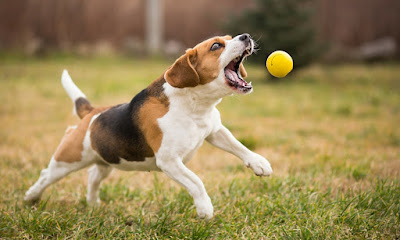We know how stressful and energy depriving moving can be for our children and us. What about our pets? They have grown up in a certain place that feels familiar and safe. Can they overcome the stress and adapt to their new home?
Picture it from their point of view. They had a yard they loved to play in where they could smell their scent all around and feel comfortable and they had a territory to protect. Maybe they had animal friends in the area that they were used to seeing. They even knew the mailman and were on friendly terms with them.
Take all that away, put them in a new place, with new smells and new animals, and a new mailman, can you see why they may feel a little distressed? All of this can give your dog stress and anxiety. This affects their health and their appetite.
You may begin to notice when your dog is feeling stressed if they have diarrhea, vomiting, or lose their appetite. This can start even before the move takes place when the structured schedule of the dog's life is turned upside down. There are things you can do to try to prevent this from happening.
Try to keep their meal times the same as always. Play with your dog every chance you get, it stresses them when they are ignored. Take them on outings to minimize the craziness of the house.
When you begin the move, keep your dog with you at all times. It can add to the stress if they constantly are being dropped off and see you leaving. Bring old toys and bedding with them to the new house so that the new place smells familiar to them. Play with them in the new house to encourage positive behavior and help ease the strange situation.
Make sure you initiate all the old rules again because sometimes a dog can think new place new rules, and accidents can happen because of this. Avoid extra stressors, like bathing or grooming, this only adds to their anxiousness. Give them time to adjust to the new place and new rules before throwing parties and gatherings.
If you notice your dog seems stressed, you can find things like calming tablets that are natural and effective. You can visit the vet and make sure they are just stressed and that it is nothing more than that. Always take precautions with your pet so as not to let them get loose in the neighborhood.
Sometimes we forget the impact our decisions have on our beloved little pets. But they are constantly watching us and looking to us for direction and stability. Be mindful when you move that it can be traumatizing to them and do your best to make the transition easy for them.
Source:http://ezinearticles.com/?Dont-Let-Moving-Traumatize-Your-Pet&id=9097519





















































